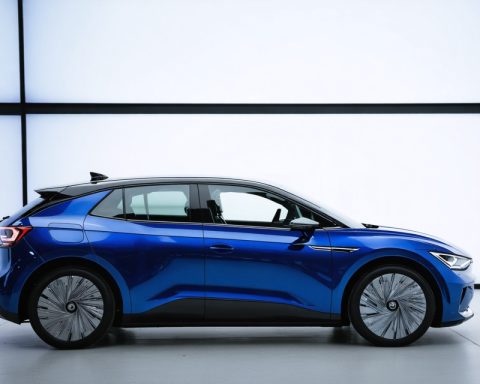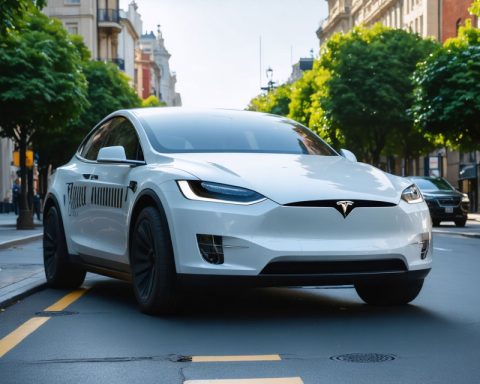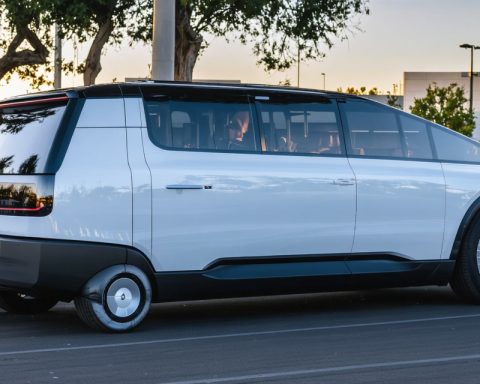- Starting July 1, 2025, Hawaii will implement a Road Usage Charge (RUC) for electric vehicle (EV) owners, replacing the declining gas tax revenue.
- EV owners can choose between a $50 annual flat fee or a mileage-based charge of $8 per 1,000 miles, capped at $50 annually.
- By July 1, 2028, all EVs in Hawaii will transition to the mileage-based RUC, retiring the flat fee.
- Legislation such as House Bill 1161 and Senate Bill 1480 could empower counties to impose their own RUCs on EVs and plug-in hybrids.
- Inspired by states like Oregon, Virginia, and Utah, Hawaii aims to establish a fair, effective infrastructure funding method via the RUC by 2033.
- The initiative seeks to ensure sustainable road maintenance funding that accommodates all vehicle types and energy sources.
Picture this: the rolling waves of the Pacific, lush green landscapes, and now— the hum of electric vehicles cruising along the vibrant roads of Hawaii. Starting July 1, 2025, an economic shift will transform how electric vehicle (EV) owners in the islands contribute to road funding. As gas tax revenues plummet due to the burgeoning popularity of EVs, Hawaii’s introduction of a Road Usage Charge (RUC) promises a sustainable financial model for maintaining its thoroughfares.
The Looming Road Usage Charge
Offering a choice between a straightforward $50 annual fee and a mileage-based charge, Hawaii’s novel approach taps into the notion of equity. Charged at $8 per 1,000 miles, capped at $50 annually, the RUC encourages EV owners to reconsider their road time. Vehicles begin to whisper narratives through their odometer readings, capturing more than miles as officials endeavor to collect accurate data during annual inspections.
Eyes turn to the horizon when July 1, 2028, arrives. The entire fleet of electric vehicles in Hawaii must embrace the RUC, retiring the flat fee into the annals of history. An insight into average driving habits reveals most Hawaiian EV owners might lean towards the flat fee for now—travel patterns surpass this threshold of 6,300 miles yearly across Maui, Kauai, Honolulu, and Hawaii counties.
A New Norm on the Horizon for Counties
Hawaii’s innovative effort isn’t circulating in a vacuum. House Bill 1161 and Senate Bill 1480 float through legislative chambers, holding the potential to equip counties with the authority to levy their road usage fees on EVs and plug-in hybrids. Such legislation allies with the state’s larger mission: a fully realized RUC system by 2033 as an effective, long-lasting infrastructure funding method.
The Broader Context
Across the United States, other pioneering states like Oregon, Virginia, and Utah explore similar ventures, lacing the future of transportation funding with per-mile charges. These trailblazers offer voluntary programs, ushering in a fairer scheme by linking fees to travel distances rather than static registration surcharges.
As the wheels of change continue to spin, Hawaii stands among those leading the charge for fiscal innovation. While the landscape of transportation taxes evolves, the shift sheds light on a critical consideration—funding roads in a way that fairly encompasses all vehicle types and energy sources. For Hawaii, this means ensuring the benefits of pristine roadways are sustained, for both the bustling hum of electric engines and the faint whispers of the ocean breeze.
Electric Vehicle Charging in Hawaii: A New Horizon for Road Funding
With the picturesque backdrop of Hawaii, from its azure beaches to the verdant expanse of its landscapes, an economic transformation is setting the stage for sustainable road funding. As Hawaii shifts towards a greener future, the state is set to introduce a Road Usage Charge (RUC) by July 1, 2025, to replace dwindling gas tax revenues due to the rise in electric vehicles (EVs). This initiative marks a pivotal step in ensuring the upkeep of its infrastructure while accommodating the burgeoning popularity of EVs.
Understanding Hawaii’s Road Usage Charge (RUC)
By offering a choice between a straightforward $50 annual fee and a mileage-based charge at $8 per 1,000 miles—capped at $50 annually—the RUC introduces a fairer method of funding road maintenance. The novel approach seeks to balance the revenue model, ensuring that as more vehicles switch to electric, their contribution to road maintenance remains equitable.
A National Trend in Road Funding
Hawaii is not alone in this innovative approach. States like Oregon, Virginia, and Utah are exploring pay-per-mile systems, which provide a more equitable framework compared to traditional registration fees. These states offer voluntary programs as a step towards more equitable transportation funding by equitably linking the costs to a vehicle’s road usage rather than static fees.
Key Benefits and Potential Challenges
Pros:
1. Equity in Funding: The RUC ensures all vehicle types, including fuel-efficient and electric models, contribute their fair share to road maintenance.
2. Encourages Efficient Driving: As charges are based on mileage, it could incentivize more efficient driving habits among vehicle owners.
3. Sustainable Infrastructure: The RUC supports long-term infrastructure funding sustainably as vehicle technologies continue to evolve.
Cons:
1. Implementation Costs: Establishing the RUC system could involve significant initial costs for the state.
2. Privacy Concerns: Tracking mileage may raise privacy concerns among vehicle owners.
3. Economic Impact: Changes in vehicle ownership costs may affect market dynamics and consumer choices.
Real-World Use Cases in Hawaii
For Hawaiian EV owners, especially those traveling beyond the 6,300-mile annual threshold, the flat fee currently offers a cost-effective solution. However, the state’s transition towards a comprehensive RUC by 2028 will mandate participation, phasing out the flat fee entirely.
Recommendations for EV Owners
1. Monitor Mileage: Regularly track your vehicle’s mileage to evaluate whether the flat fee or per-mile charge is more cost-effective for you.
2. Stay Informed: Keep updated with legislative changes regarding RUC and how it may impact your driving habits and costs.
3. Consider Vehicle Choice: Factor in potential road usage charges when considering a new vehicle purchase, especially for high-mileage drivers.
Future Insights and Predictions
Hawaii’s RUC initiative indicates a broader trend towards sustainable and equitable road funding nationwide. As technology and vehicle models evolve, these changes will likely become more prevalent.
Addressing privacy concerns and ensuring effective implementation will be critical to the success of such programs. This shift not only supports environmental goals by encouraging EV adoption but also lays the groundwork for a fiscally sustainable transportation infrastructure.
You can explore more about statewide initiatives and sustainable road funding at Hawaii.gov.












